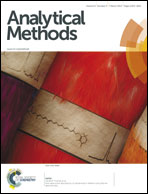Development of a sensitive assay for SERCA activity using FRET detection of ADP
Abstract
Various isoforms of sarco(endo)plasmic reticulum Ca2+-ATPase (SERCA) regulate Ca2+ homeostatic balance in both the heart (SERCA2a) and skeletal muscle (SERCA1a). Ca2+ plays a key role in these tissues as an intracellular signal that controls contractility. Due to its key role in the contractility cycle, SERCA is emerging as a promising pharmacological target to modulate heart muscle function. SERCA function is regulated by its endogenous inhibitor phospholamban (PLN). Upon binding, PLN decreases SERCA's apparent affinity for Ca2+. Therefore, the interaction between PLN and SERCA has an important role in determining both physiological and pathological conditions. Quantifying the inhibitory potency of PLN is of great importance in understanding the pathophysiology of heart muscle. Traditionally, SERCA activity assays have been performed using a PK/LDH-coupled enzyme reaction, which suffers from limited sensitivity. We have developed a new SERCA activity assay based on the direct detection of the product ADP via time resolved FRET (TR-FRET). Under optimized conditions, our assay reduced the amount of SERCA required to perform the assay 1000-fold. Inter-day reproducibility was shown to be excellent for SERCA preparations in either detergent (C12E8) or reconstituted lipids. The inhibitory effect of PLN on SERCA measured under the low-concentration conditions of our assay allowed us to more accurately investigate the binding between PLN and SERCA. Significant inhibitory effects of PLN were observed even at mid-nanomolar concentrations, significantly lower than previous Kd estimates for the SERCA–PLN complex.


 Please wait while we load your content...
Please wait while we load your content...